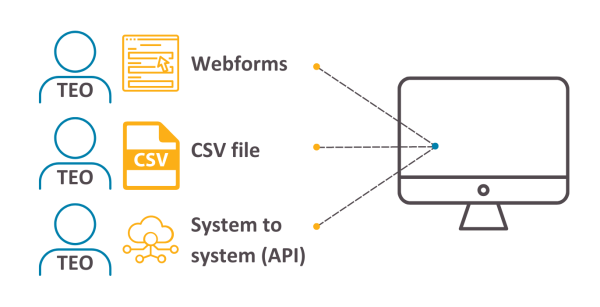Data submissions – Data System Refresh programme
Ngā tāpaetanga raraunga – hōtaka Tāmata Pūnaha Raraunga
The data exchange platform will provide a consistent workflow to support all data submissions.
The data exchange platform will provide a consistent workflow to support all data submissions.
File formats
You will be able to access your Actuals, Commitments (Mix of Provisions) and Fees Free data submissions in one place.

Webforms: A small number of webforms will be available for direct data entry. Simply update, review, and submit.
CSV file: CSV file uploads will replace existing Single Data Return (SDR), txt files and Excel templates on Workspace 2. The relevant CSV file will be provided for you to complete, upload, review and submit in DXP Ngā Kete.
System-to-system integration (API):
- The existing API for work-based modes of delivery data submissions will be upgraded to a more modern integration technology and will replace the ITR.
- A new API for SDR data submissions will be available. This is an alternative option to the CSV file upload process, which SMS vendors may implement. Both options are fully supported.
Historic Submissions
Data submitted prior to transition to DXP Ngā Kete will be provided on the portal for you to download, amend and resubmit if required.
Data Submission Exclusions
In general, any data that you currently submit through Single Data Return, Industry Training Register or data collection templates on Workspace 2 is in scope for the DSR.
Data submissions exclusions are:
- the Quality Evaluation Component of the Performance-Based Research Fund (PBRF)
- all contract-based funds, eg, WLN Employer-led funding.
Frequency of Reporting
TEOs funded for DQ3-7 in both provider-based and work-based modes of delivery will be required to submit Indicative Data Returns more frequently to support changing enrolment patterns.
There is no change to the frequency of data for TEOs who are funded for DQ3-7 in provider-based only, or work-based only modes of delivery. In the future TEC will work with the whole sector on potential increased frequency for indicative returns to support changing enrolment patterns, but this will not apply for 2025.
There is no change to the frequency of reporting for Fees Free or other funds.